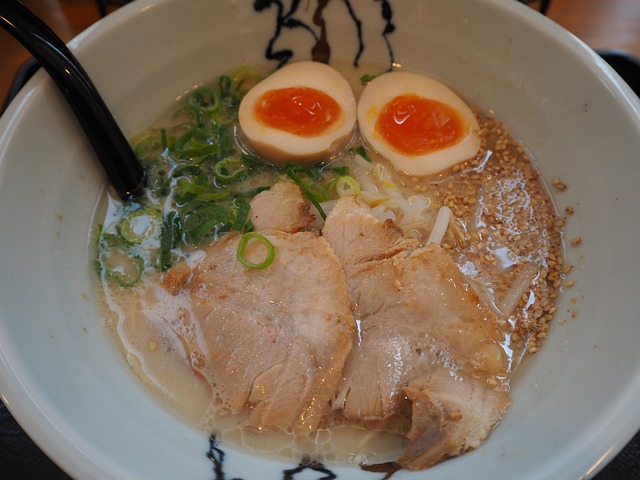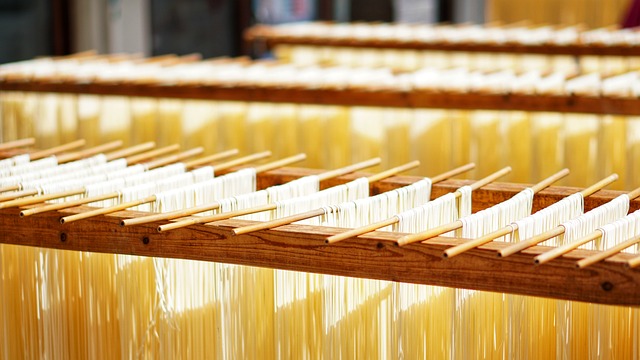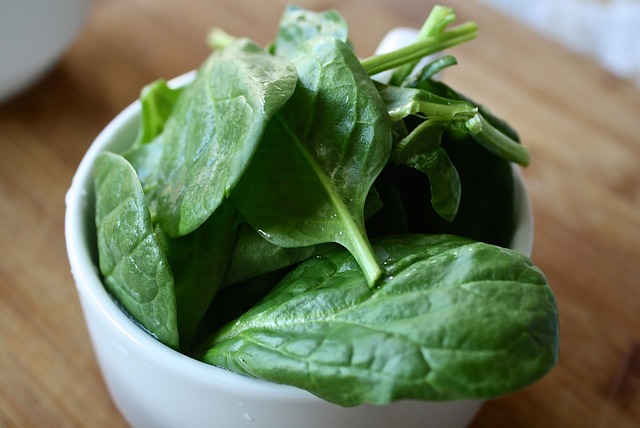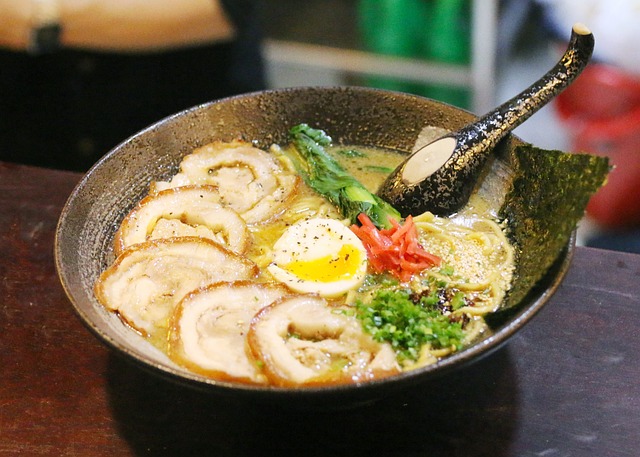Ramen-the History and What is It?
Ramen is a dish born from the Chinese noodle cuisine and its fusion with Japanese food culture.
By combining the five elements of noodles, broth, sauce, ingredients, and fat/oil, an infinite number of recipes can be created, and there are many variations in taste and style, such as soy sauce ramen, miso ramen, salt ramen, tonkotsu ramen, and dipping ramen.
Another attraction may be "local ramen," which reflects the different climates, climates, and food cultures of different regions of Japan.
Thus, ramen, which has continued to evolve uniquely in Japan, is now spreading around the world.

目次/Contents
Origin of Ramen
Ramen has its roots in Chinese noodles, and although there are records of "sutra noodles" already being eaten in 15th-century Japan.
It was made according to a recipe nearly identical to that of modern ramen noodles, they never spread to the common people.
In 1858, Japan broke its 200-year isolation and concluded treaties of amity and commerce with other countries, opening its ports the following year in 1859.
As a result, many foreigners moved to Japan, and Chinese noodle dishes began to spread in earnest amidst the influx of foreign food culture.
The Birth of the Ramen Restaurant
In 1870, the first Chinese restaurant in Japan opened in Yokohama.
For a long time after that, Chinese cuisine was mainly course-driven and high-class.
As the number of Chinese students increased from around the late Meiji period, Chinese restaurants for the public also increased.
Against this backdrop, "Rairaiken" opened in Asakusa, Tokyo in 1910 and was the first ramen restaurant to fuse Chinese noodle cuisine with Japanese food culture.
The restaurant was so popular that 3,000 bowls of ramen were served in a single day.
Ramen Culture Spreading from Food Stalls
The Great Kanto Earthquake of 1923 caused extensive damage to Tokyo and Yokohama, where ramen stores were concentrated at the time.
After the earthquake, the number of "yatai" stalls, which could be easily started, increased, and ramen stores were scattered across the country.
Unlike street stores, many yatai limited the number of items on their menus and ramen stores began to specialize.
In 1939 of World War II, many ramen stores were forced to close.
After the war, the number of yatai increased again, and ramen became popular nationwide.
The Five Major Components of Ramen
There is no set recipe for ramen.
However, by combining five elements - noodles, broth, sauce, fat/oil, and ingredients - an almost infinite number of variations can be created.

Noodles
Original noodles can be created by changing the noodle-making method (shrunken, straight, or hand-kneaded), type of wheat, thickness, water content (ratio of water added to the noodle), and shape.
Dashi (Broth)
We make our own broth by combining animal ingredients (pork and chicken), seafood ingredients (kelp and dried sardines), and vegetable ingredients (garlic and onions).
Tare (Sauce)
It flavors the soup and is made by condensing seasonings and meat or seafood extracts.
Soy sauce sauce, salt sauce, and miso sauce are commonly used.
The soup is completed by combining the dashi with the sauce.
Fat/Oils
It is one of the essential flavors of ramen.
It can be made from animal oil, vegetable oil, or flavored oil, and also serves as a lid to keep the soup from cooling down.
Ingredient
There is no set rule for ingredients, but the most common are chashu pork, bamboo shoots, green onions, followed by boiled egg, nori, kikurage mushrooms, bean sprouts, naruto, and spinach.
Other ingredients include wontons, butter, chili peppers, minced meat, white onions, mitsuba (mitsuba), corn, and kakuni (cubes of boiled fish).

Classification of Ramen
There are several ways to classify ramen.
by Sauce
It can be classified as "soy sauce ramen," "salt ramen," or "miso ramen" based on the type of sauce used, such as soy sauce sauce, salt sauce, or miso sauce.
by Soup
Ramen with a distinctive soup can also be classified by the type of soup.
"Tonkotsu ramen" is made by simmering pork bones until they become cloudy.
"Chicken shiratsu ramen" is made by simmering chicken bones in the same way.
"Thick seafood ramen" is made by using a large amount of seafood.
by Style
Those that cannot be categorized by soup or sauce can be classified by style.
"Tsukemen," in which the noodles are separated from the dipping sauce.
"Mazemen," which contains no soup.
"Hiyashi-Chuka" chilled ramen, a popular summer staple.
These are so prevalent that specialty stores for each have sprung up.
Local Ramen
Japan is an island nation with a long and narrow coastline, and there are different food cultures and local cuisines depending on the seasons, climate, and other factors.
There are ramen theme parks throughout Japan, including the Shin-Yokohama Ramen Museum, where you can enjoy ramen from all over the country without having to fly or take the bullet train!
Sapporo Ramen
This thick ramen is born from the cold of Hokkaido winters and is infused with vegetable and garlic extracts.
Bean sprouts and other ingredients are stir-fried in a wok, and the soup is then poured into the wok to increase the sense of unity and warm the body from the core.
The noodles are made of medium-thick, firm, and frizzled noodles.
Hakodate Ramen
This light salt ramen spread in the relatively warmer regions of Hokkaido.
It is characterized by ingredients such as chashu pork, pickled bamboo shoots, and chopped green onions, as well as a clear broth and medium-thin, straight noodles, all of which have retained the original form introduced from China.
Yokohama Ramen
This type of ramen evolved from a noodle soup introduced from China and flavored with soy sauce in its own unique way.
In recent years, the style known as "Iekei," which combines thick tonkotsu (pork bone) soy sauce and firm, thick noodles, has become synonymous with this style and has gained nationwide recognition.

Kyoto Ramen
Kyoto cuisine is known for its light flavor, but when it comes to ramen, it is thick and rich.
The pork- and chicken-based soups can be divided into three main groups, but they are all thick and have a strong impact.
Hakata Ramen
Hakata is a representative city in the Kyushu region, and its ramen, which uses tonkotsu (pork bone) broth simmered for a long time and straight noodles with low water content, is well known throughout the country.
Another unique feature of Hakata ramen is the "kaedama" system, which allows customers to refill their bowls with more noodles.
Hachinohe Ramen
The soup is made with chicken bones, leeks, garlic, and other local ingredients.
The flavor of the soup, which is finished with a special brewed soy sauce, is light, with a hint of niboshi (dried sardines) flavor, giving it a nostalgic feel.
The noodles are characterized by their thin, frizzled, hand-kneaded noodles.
The toppings are a simple combination of leek, chashu pork, and bamboo shoots (shinachiku).
Another feature of this dish is that it is served in a special bowl at restaurants that carry it.
In Summary...
Today, ramen continues to evolve and adapt to various regional and cultural influences.
It has become a global phenomenon, with countless variations and styles to explore, from traditional Japanese ramen to creative and unconventional adaptations.
The history of ramen is a testament to the culinary creativity and innovation that can arise when different cultures and ingredients come together!


